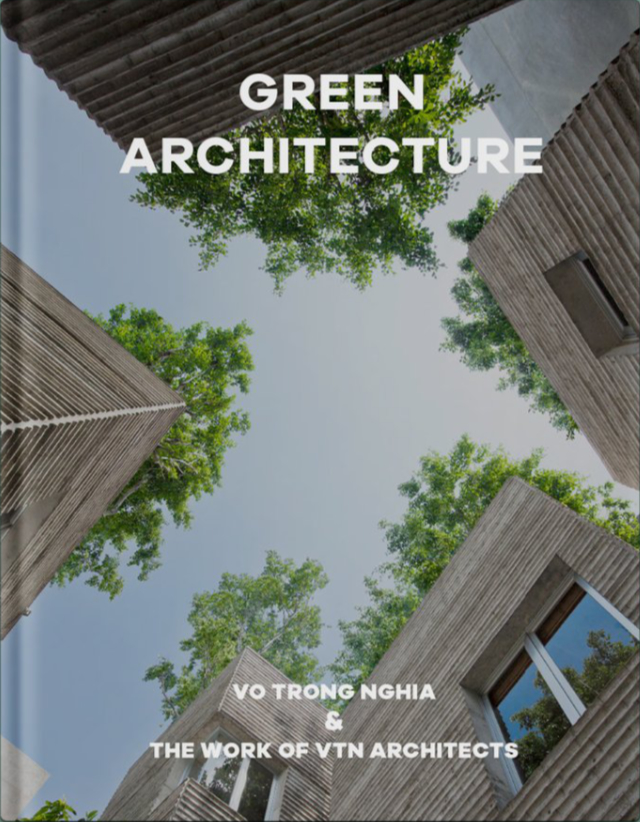Green Architecture
Green Architecture: Vo Trong Nghia & The Work of VTN ArchitectsPreface by VTN Architects; Introduction by Vo Trong Nghia; Interview by Vladimir Belogolovsky; Edited by Oscar Riera OjedaOscar Riera Ojeda Publishers, May 2021Hardcover | 8-1/2 x 11 inches | 320 pages | English | ISBN: 9781946226464 | $59.00PUBLISHER'S DESCRIPTION:"Vietnamese cities have lost their tropical beauty. They have turned into concrete jungles just like Bangkok or Jakarta.” Vo Trong NghiaIn a context of rapid urbanization and environmental crisis, Vietnam, like many other countries across the world, requires innovative new architectural solutions to improve the lives of its urban residents. Green Architecture showcases the multi-faceted responses to these challenges conceived by the award winning studio VTN Architects, led by Vo Trong Nghia, in which the emphasis is placed on bringing greenery back to cities in a holistic and sustainable manner.Through detailed illustrated breakdowns of a series of building projects such as The Babylon Hotel, House for Trees and Nanoco Headquarters, as well as several schools, educational institutions and apartment buildings, and enlightening texts including an interview with the architect, this book explores how Vo Trong Nghia and his team draw on their experience and philosophy to help restore the connection between architecture and nature. “Green architecture means being friendly with the environment, not just planting trees,” Nghia says, and in these pages we see those sentiments reflected in the flow and design of his buildings, which transcend functionality to foster a sense of community in a way that is drawing admiration and setting an example across Southeast Asia and much further afield.Based in Ho Chi Minh City, VTN Architects infuses its work with lushly planted walls, hanging vines, structure-piercing trees, weathered stones, and sunken landscapes.REFERRAL LINKS: (Last icon is link to publisher's website; enter "jh30" at checkout for a 30% discount on purchase of this book.)dDAB COMMENTARY:The first of three new monographs on the work of Vietnamese architect Vo Trong Nghia and VTN Architects focuses on bamboo architecture, domes and vaults for restaurants, cafes, and installations. The second book — second in the order reviewed on this blog, at least — takes another thematic look at the impressive output of the firm, presenting thirteen projects that illustrate their "efforts to increase green spaces to mitigate climate change." The cover depicts VTN's most popular project in this regard: the House for Trees, a residence in Ho Chi Minh made up of five concrete boxed topped by trees. The combination of concrete and vegetation is consistent across the projects in Green Architecture — and the most unsettling aspect of the firm's sustainability ambitions.Concrete is the most used construction material anywhere, "second only to water as the most-consumed resource on the planet," according to the BBC. Responsible for nearly ten percent of global carbon emissions, concrete is a material in need of radical reinvention (new mixes that reduce or somehow eliminate emissions) or replacement with other, ideally renewable materials, few of which can achieve what concrete can, especially at larger scales. Tucked at the end of the project descriptions for Chicland Hotel are justifications for concrete that could be applied to the rest of the buildings in the book: "maintainability" and "minimizing the risk of water penetration." These traits supposedly make the 21-story hotel with concrete planters "highly sustainable over a longer period."So if the strength and longevity of concrete makes it arguably sustainable, somewhat balancing out the material's carbon deficiencies, the trees and plants in, on, and around the buildings are what makes VTN's architecture literally green. The desire to make green buildings goes beyond climate change and involves personal well-being, though. Nghia tells Vladimir Belogolovsky in the interview at the end of the book that the House for Trees was designed for a friend who was depressed; the separate structures forcing him to go outside throughout the day, combined with the trees on the roofs attracting birds, improved the client's psychological disposition. Nghia mentions the Buddhist and meditative practices at the heart of the firm, and it's no stretch to find those finding form in the personal green spaces that anchor that house and all the other projects on display here.SPREADS:

Preface by VTN Architects; Introduction by Vo Trong Nghia; Interview by Vladimir Belogolovsky; Edited by Oscar Riera Ojeda
Oscar Riera Ojeda Publishers, May 2021
Hardcover | 8-1/2 x 11 inches | 320 pages | English | ISBN: 9781946226464 | $59.00
PUBLISHER'S DESCRIPTION:
REFERRAL LINKS:





dDAB COMMENTARY:
SPREADS:





